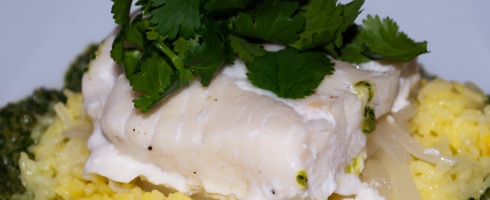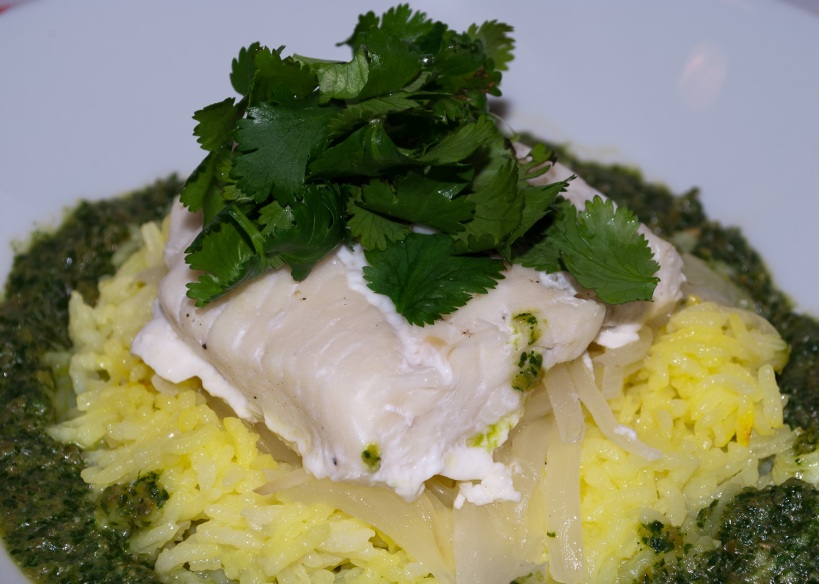I love waking up in Mexico City… Each morning in my suegra’s house is to awaken every sense in one’s body. The first to awake is sound; you can hear the commotion of the city, car horns going off, the sounds of the street workers yelling “Glooooobos” or the occasional “Tamales Oaxacaños” recording. The next is sight; the bright sun of the Valle de México shining through your eyelids, kick starting your brain. Then comes smell; there is nothing quite like the aroma of my suegra‘s kitchen wafting up the stairs and into the bedroom. It often brings me back to the old cartoons, where the aromas were like hands, grabbing the antagonist and leading them to their savory desires. Finally, there is touch; to walk downstairs, sit down and take a fresh corn tortilla, a cup of café de olla, and a plate of freshly prepared mixotes is the final step to waking up in Mexico City!
Among all the delicious dishes my suegra makes, one of my Top 5 favorites is Mixotes. Mixotes is a dish typical of central Mexico and the name derives from what I believe to be the method (traditionally the meat is wrapped in the leaves of the Maguey cactus the ‘Mix’ ) and the cooking technique ( the ‘otl’ part or the ‘otes’ plural) , but I am not a Nahuatl expert so don’t quote me as the source of this linguistic synopsis. I digress, Mixotes can be made with almost any type of meat. I have had ram, lamb, and of course in the case of this recipe, chicken. The traditional way is to season the meat with a chile paste and wrap in the leaves of the Maguey, very similar to barbacoa, add a scoop of nopales, and to pit roast the packages for several hours. The modern preparation is to prepare En Papillote and steam the packages. In this case, we use foil instead of parchment paper. The chipotles used in this dish smell particularly delicious because of the smoky, earthy flavor that dried chipotles bring to the party. Those smells are the little hands that bring me down those stairs in the morning!
The final result is a wonderful spicy dish in plenty of chipotle flavored broth, tender cactus, and succulent chicken. I open up that package, close my eyes, and I am transported back to my suegra’s kitchen! Enjoy!
Mixotes de Pollo
- 6-7 Chicken Quarters (Legs & Thighs)
- 12-13 Dried Chipotles Moras
- 1 cup cilantro leafs, loosely packed
- 6-7 Nopales (cactus paddles)
- 1 Large Onion
- 1 clove garlic
- Salt & Pepper to taste
- Put the chipotles in a saucepan with water and bring to a boil over medium-high heat. Reduce heat to a simmer and simmer for about 10 minutes.
- While the chipotles are boiling, clean the nopales and cut into thin 1 inch or less strips.
- Place the nopales in a medium saucepan with water and bring to a boil. Boil for about 3-5 minutes. Then drain and rinse with cold water, and let drain.
- Take the chicken and remove the skin, rinse well and pat dry. Place in a large mixing bowl.
- Slice the onion thin using a mandolin and combine with the chicken in the mixing bowl.
- Add the nopales to the mixing bowl.
- Wash the cilantro and remove the stems, add to the mixing bowl.
- Once the chipotles are tender, put on some food service gloves and remove the stems and seeds, place in a blender with the clove of garlic and about 1/4 cup of the liquid you boiled the chipoltes in. Puree the mixture well and add to the mixing bowl.
- Cover and place in the refrigerator for about 30 minutes to allow the chicken time to marinate in the chile mixture.
- Grab some aluminum foil and make 6 sheets, make them large enough to wrap two pieces of chicken and some of the chile & vegetable mixture.
- With a large spoon, scoop out two pieces of chicken and some of the vegetables, place in the center of the foil and fold up the package, do this until all the chicken is wrapped into individual foil pouches.
- Place the pouches in a large pot with about 1.5 inches of water, you can place a bowl inverted in the bottom and then place the packages on top of and around the bowl, this will allow the packages to steam. OR you can use a spaghetti cooker (the one with the strainer insert).
- Bring to a boil over medium-high heat and steam the packages for 45 minutes. After 45 minutes, take out a package and check the chicken to ensure it is fully cooked.
- Serve with Saffron Rice or Frijoles de Olla.
























